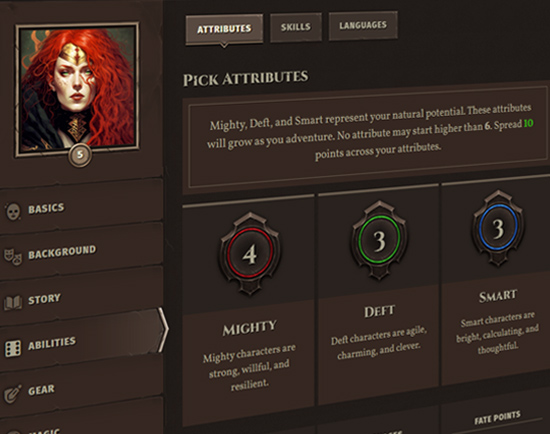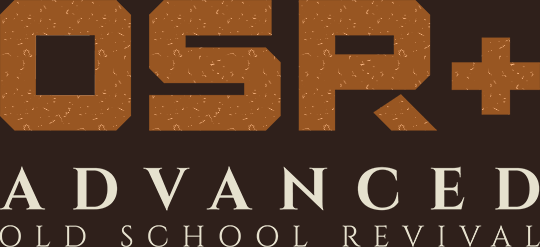Space in an encounter is always defined abstractly, and in relationship to other things in the fiction. No mechanic in OSR+ will ever refer to a real-world measurement so that all mechanics are adaptable to any situation. As the core rules illustrate, there are three types of space in the game:
Personal
Generally what a character can reach for with their limbs. This personal bubble is not intended to encompass more than the space immediately surrounding a single character (i.e., a single hex on a map and its adjacent hexes), and can’t be expanded to accommodate more than one character. If the character is unusually large, that may mean they occupy a larger space (more than 1 hex).
Melee
The distance a PC can move at a brisk space while taking a single action, and also the distance of standard movement in round. Such a space is proportional to the size of the scene, but never more than one-half its size. (If the hex grid is 20 hexes across, a melee space might be 5 hexes across, but never more than 10). A melee space can accommodate multiple characters.
Encounter
The whole space of the scene. If the scene is a forest, that’s the boundaries of the clearing in which the scene takes place; if it’s a basement, that’s the whole basement. (On a battlemap, this would be the entire battle map.)
Obviously, there will be overlap in tight spaces. If the whole scene takes place in a small bedroom, you should still treat the bedroom as an encounter space for the purposes of calculating costs (such as in spells)—a melee space would technically be half the room—but it’s likely characters can still move across the whole room in a single turn, or shoot anyone anywhere in the scene.
See also: the core rules speak to the "effective ranges" of ranged weapons vs. melee weapons.
 Armor
Armor Classes
Classes Conflicts
Conflicts Ethos
Ethos Flaws
Flaws Glossary
Glossary Kits
Kits Maleficence
Maleficence Origins
Origins Shields
Shields Skills
Skills Spells
Spells Stances
Stances Status Effects
Status Effects Tactics
Tactics Talents
Talents Techniques
Techniques Treasure
Treasure Weapons
Weapons











 Hall of Heroes
Hall of Heroes Hall of Legends
Hall of Legends Dungeons & Flagons
Dungeons & Flagons